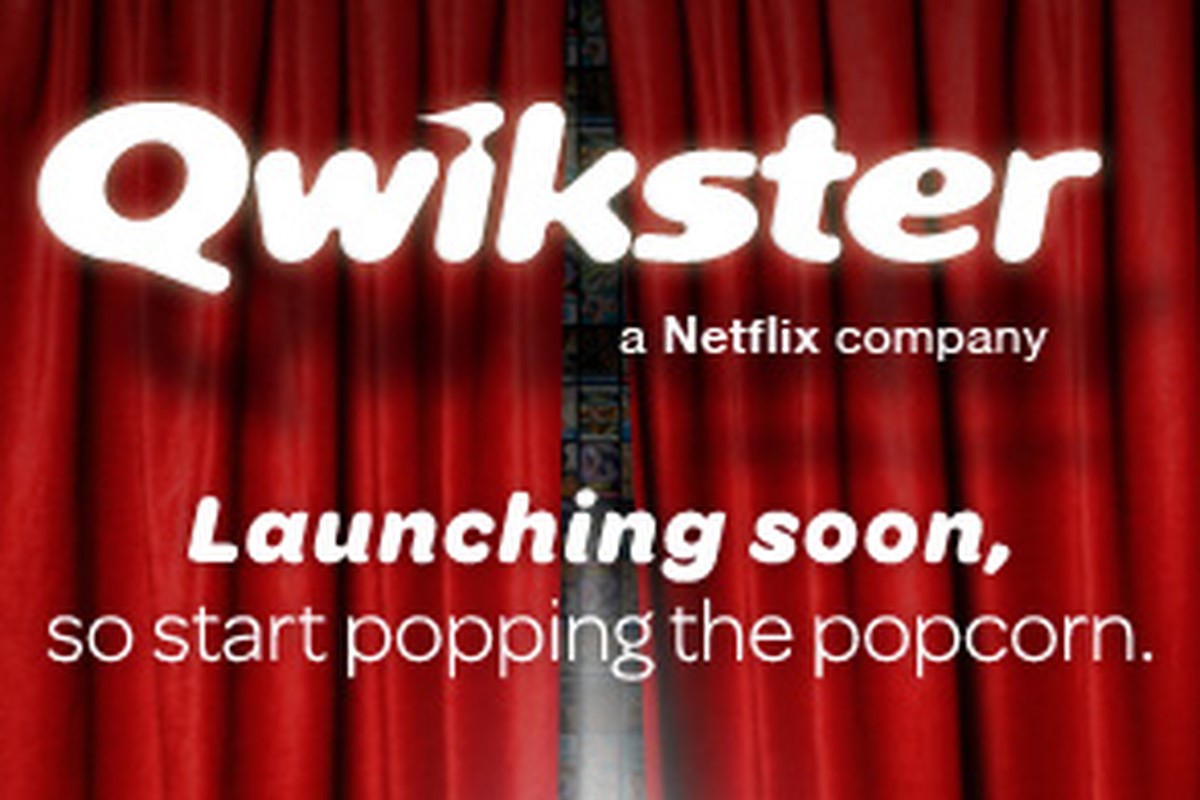Branding
UCSD MGT 100 Week 7
Branding
- Logos
- Netflix & Kraft case studies
- What is a brand?
- How do brands influence choice?
- Brand vs. Performance advertising
- Ads measurement

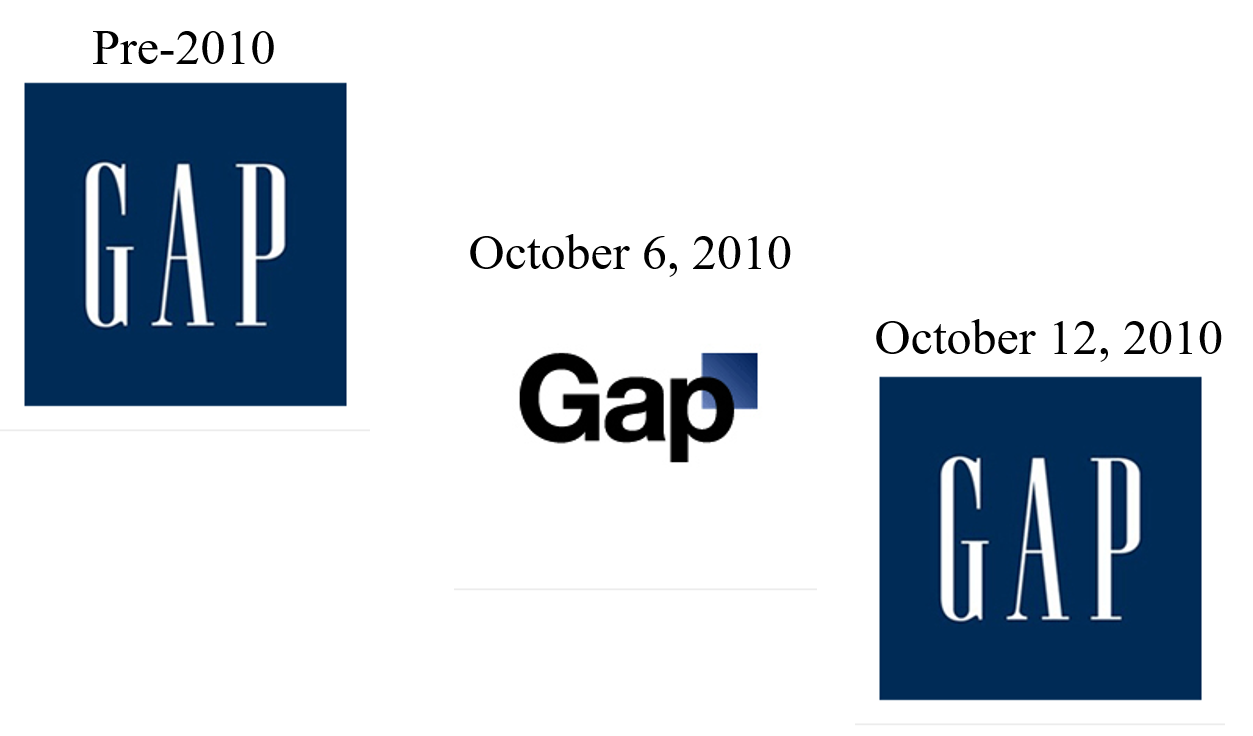


Case study : Netflix
- 1997: Founded to deliver moves over the internet
- 1999: Pioneered DVD-by-mail
- 2007: Launched streaming
- 2011: July price hike, Sept service split into
- Netflix: Video streaming
- “Qwikster”: Rebranded DVD-by-mail service
![]()
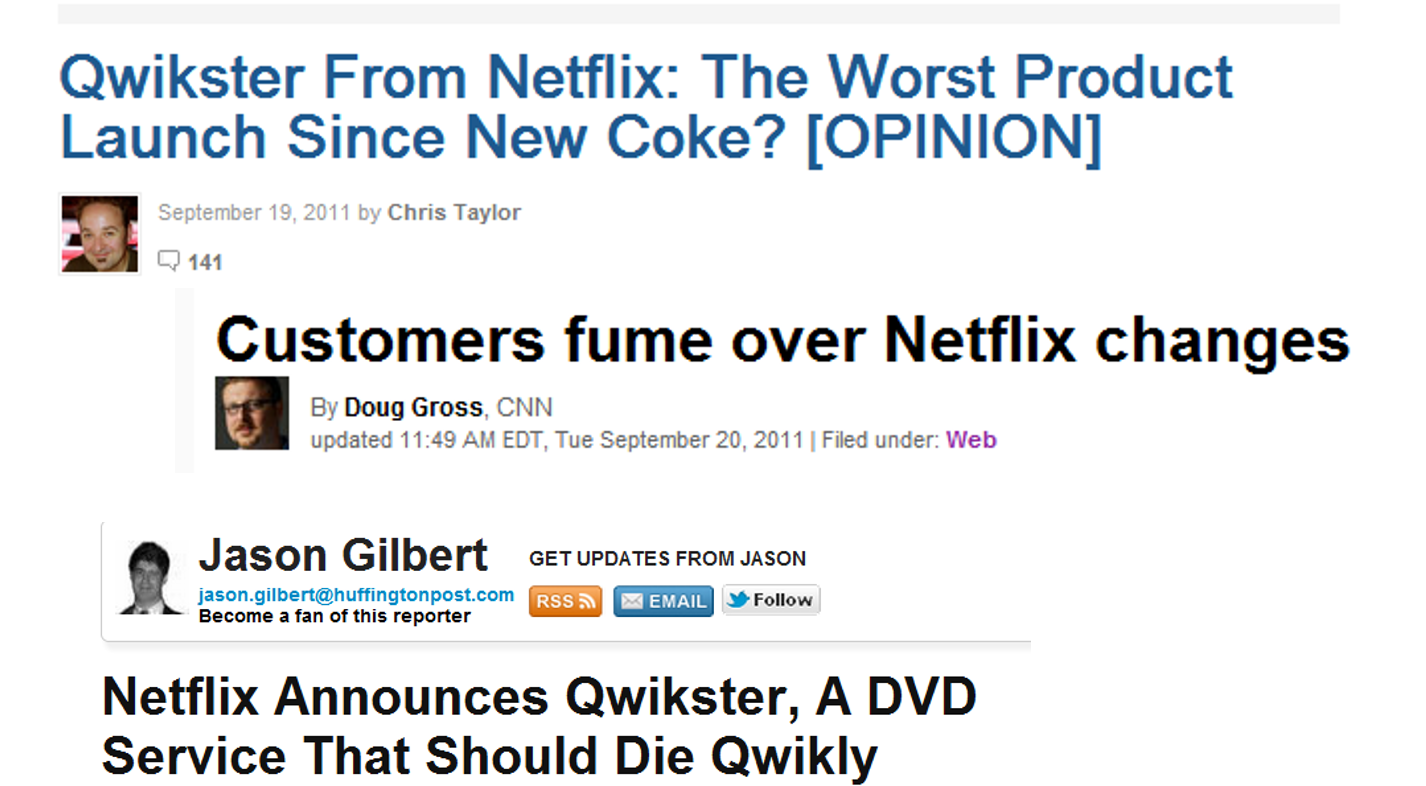

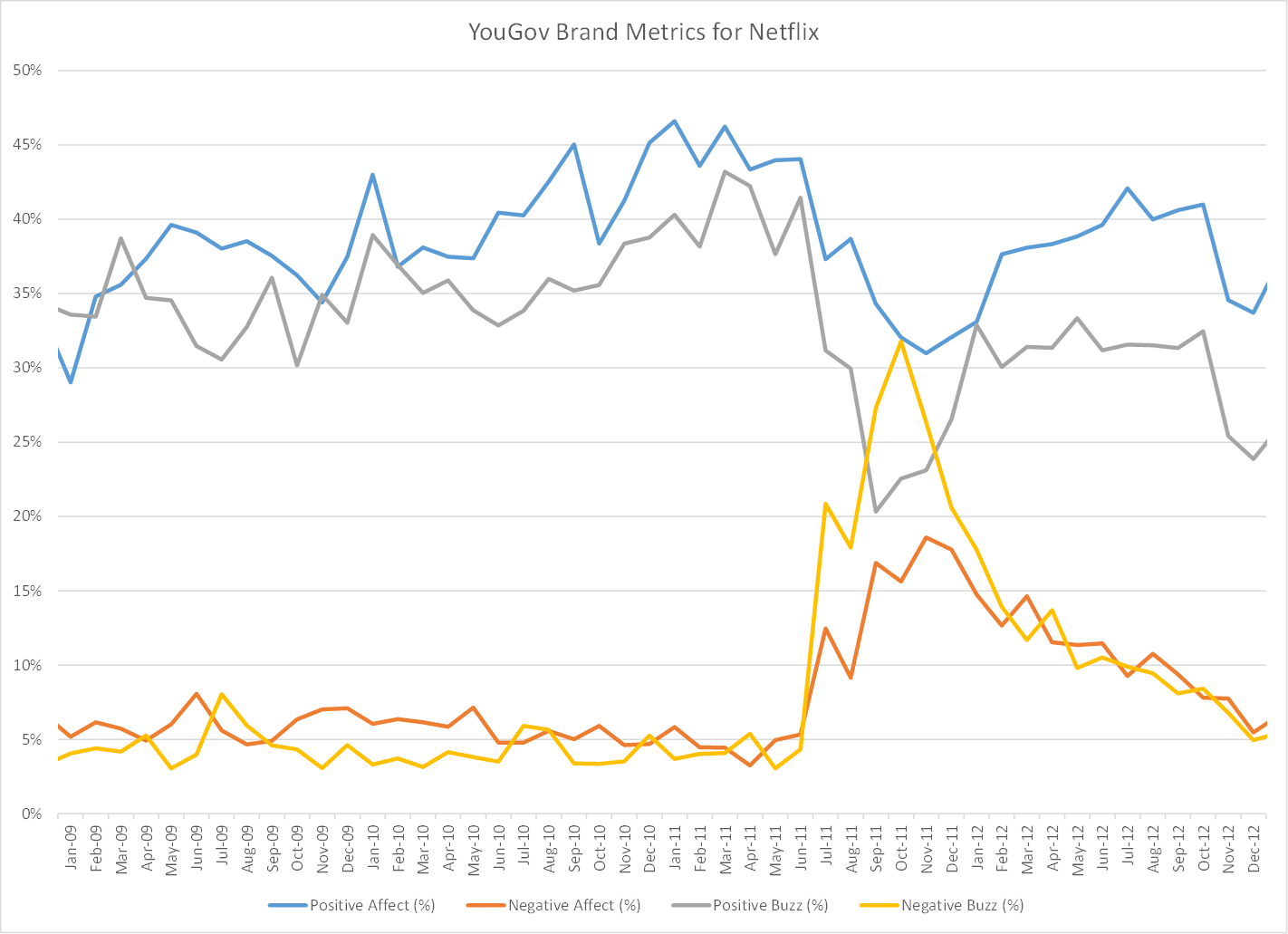
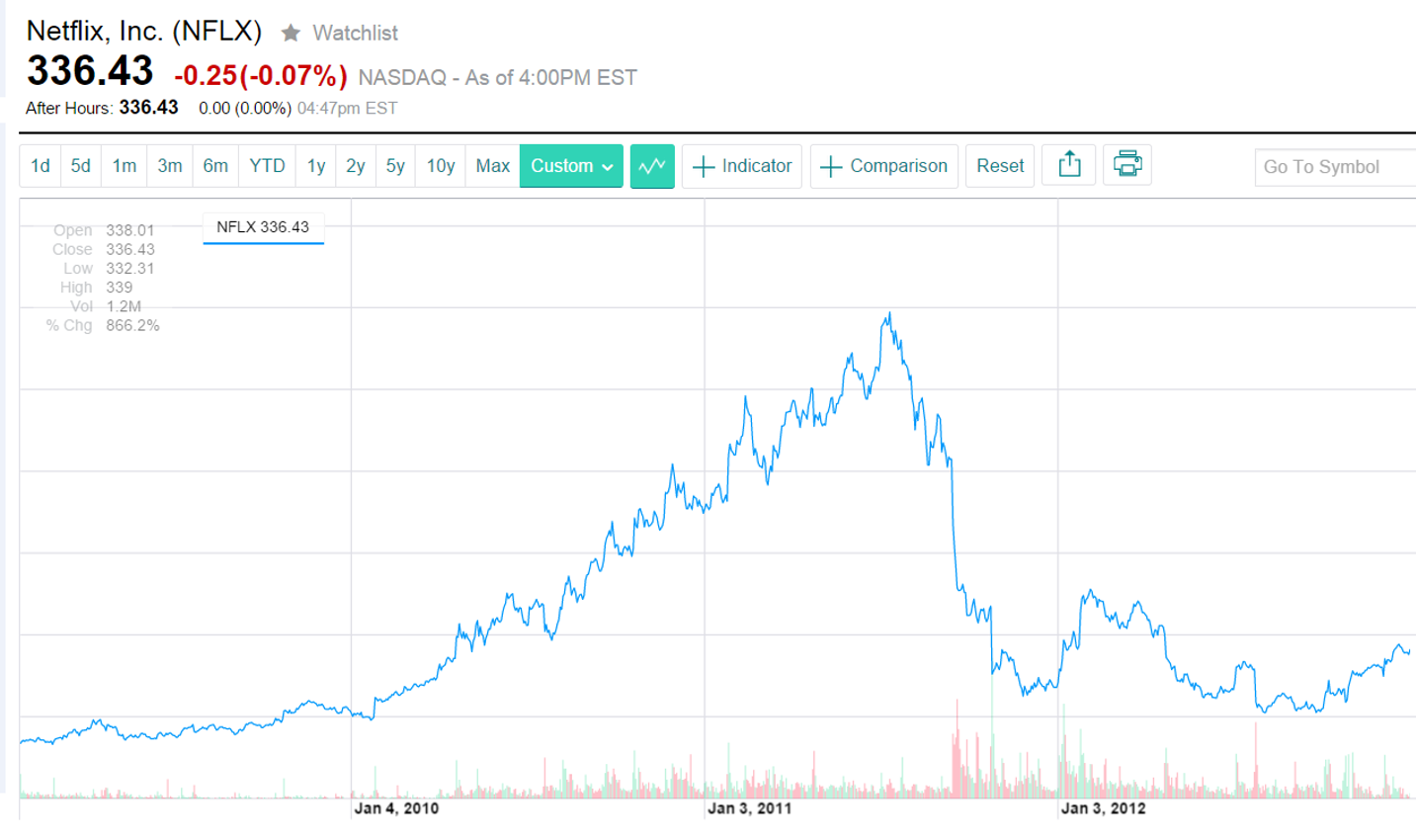
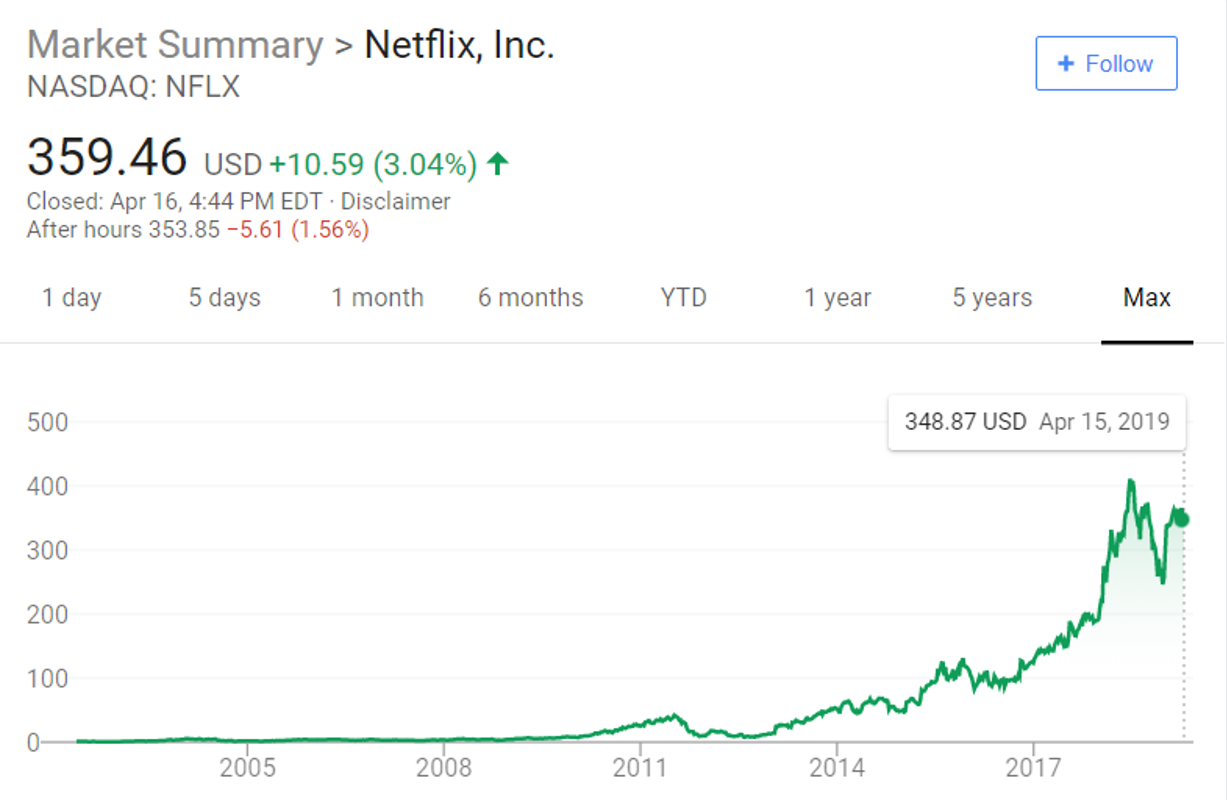
Netflix Case study : Takeaways
- Brand adjustments require consumer acceptance
- You own the IP, not the mental real estate
- Smaller steps encounter less resistance
- Great brands monitor customer perceptions
- If you mis-step, change course
- Some news is bad news
Case study : Kraft Mac n Cheese

What is a brand?
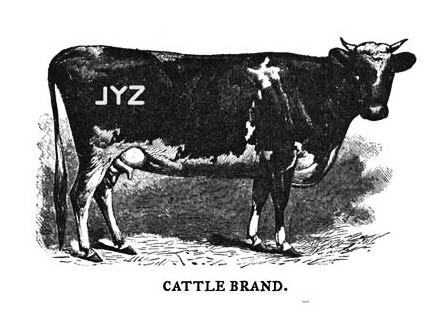
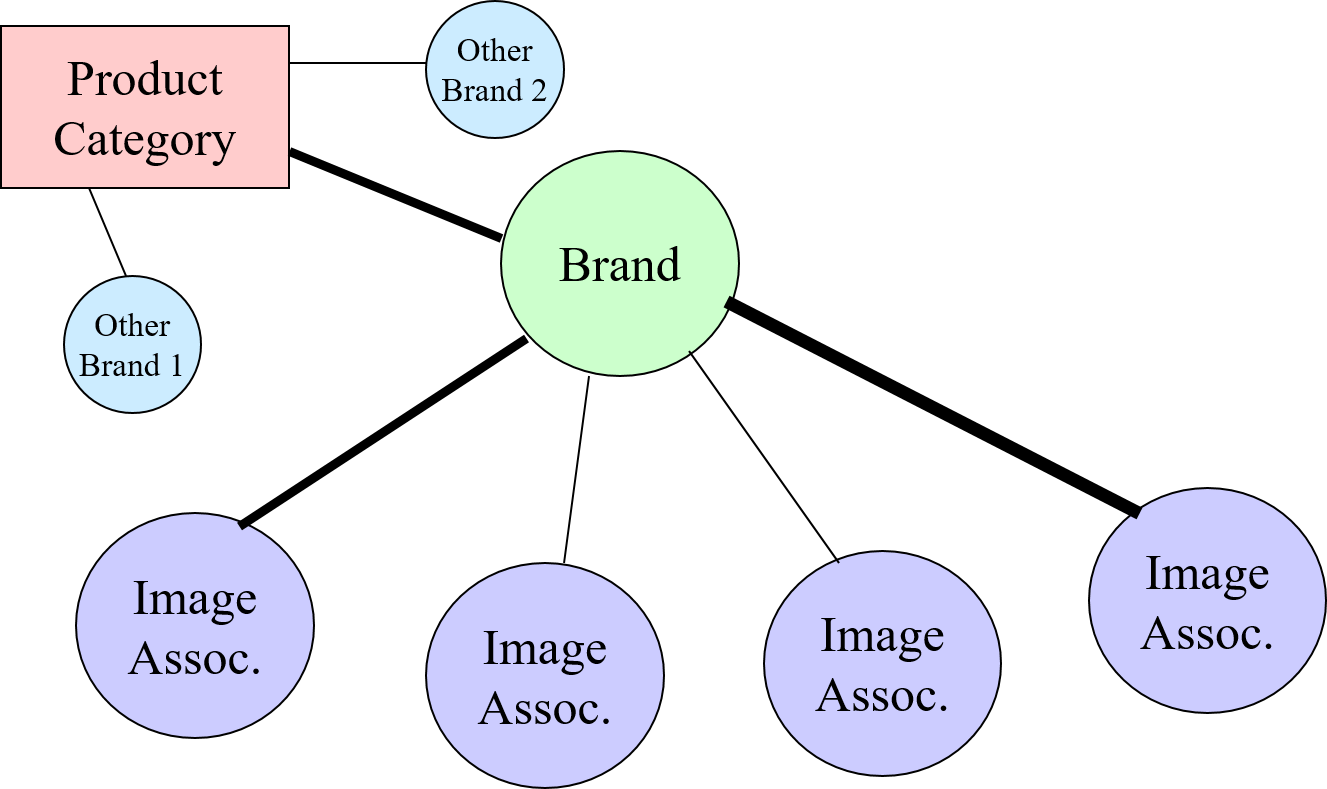
What is a brand?
An idea that shifts preference
Brands reside in consumers’ minds
- Mental real estate: Firm owns trademark but not brand
- Rooted in reality but reflects consumer experiences, perceptions and idiosyncracies
Some auto-associative sequences
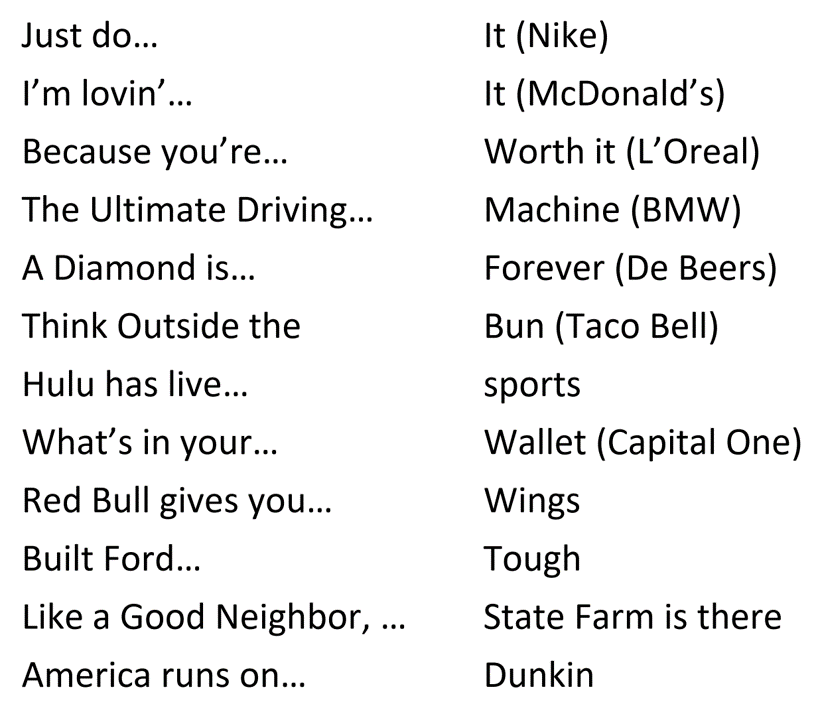
- Why do firms spend so much to create these associations in consumers’ minds?
What association?
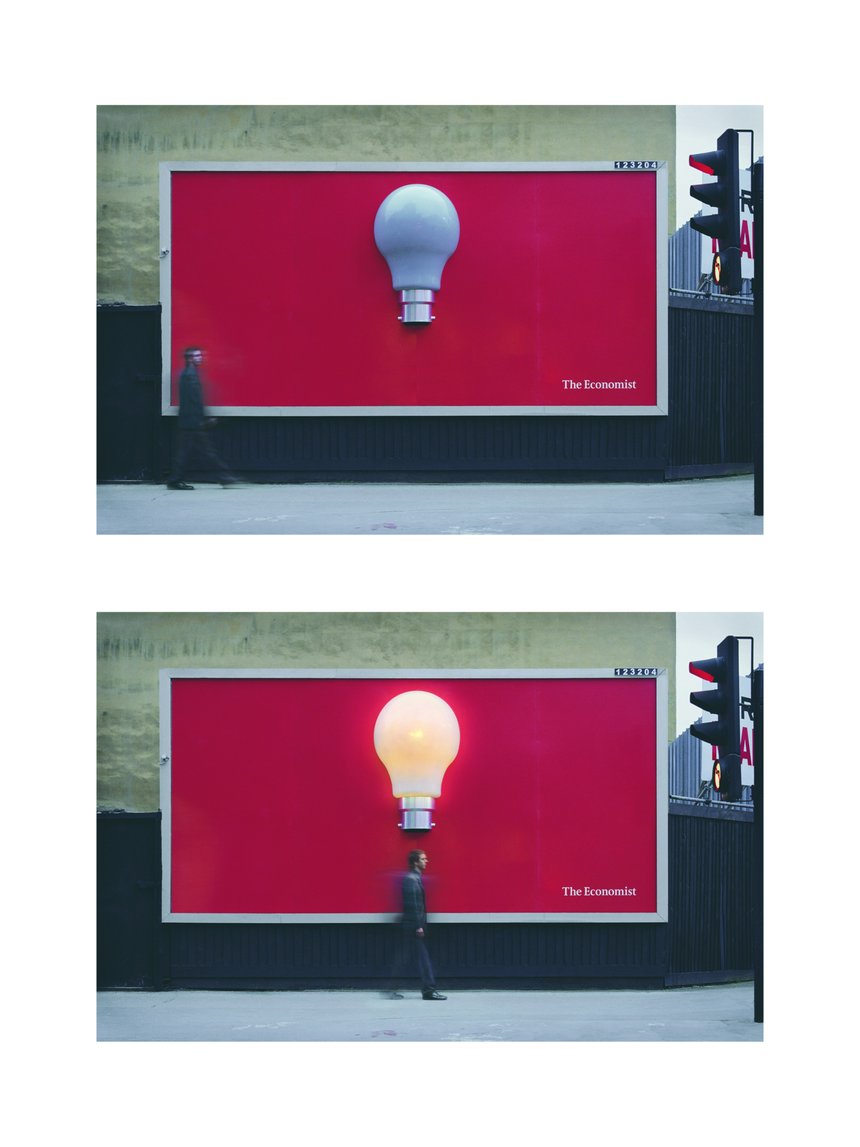
Brand Safety, Content Moderation
- Brands try to avoid unsavory associations–misinfo, hate, violence, obscenity, etc–as they may upset consumers, generate embarrassing publicity, and create unfavorable brand associations
- Brands have long demanded advertising platforms maintain “brand safety”
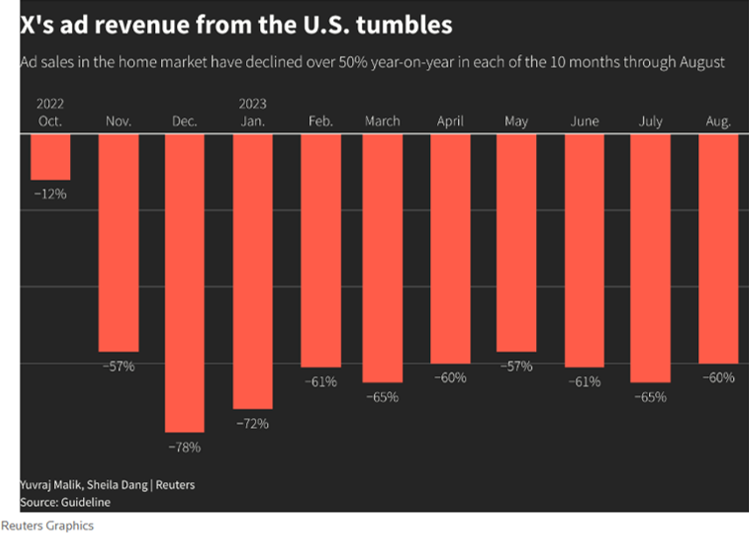
How do Brands Work?
Credibility
Rapid communication
Personality & Self-expression
Gestalt
1. Credibility
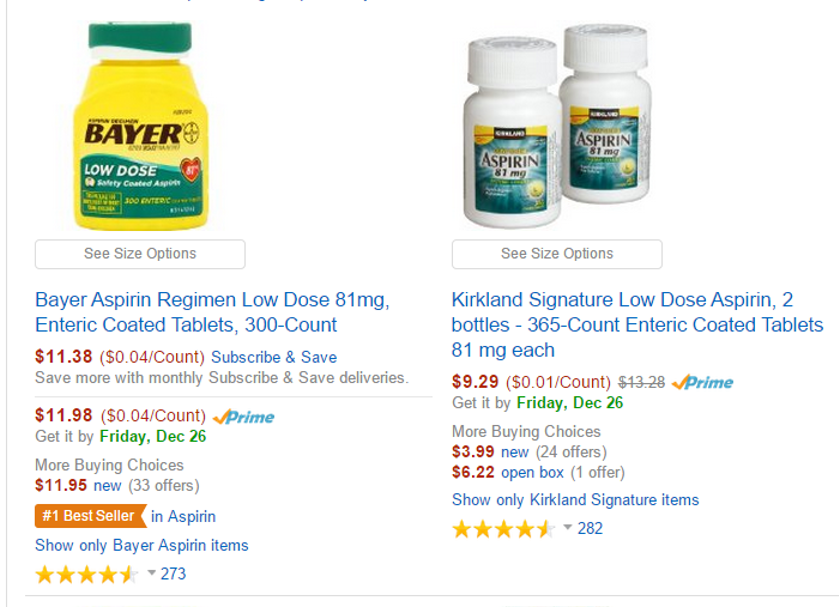
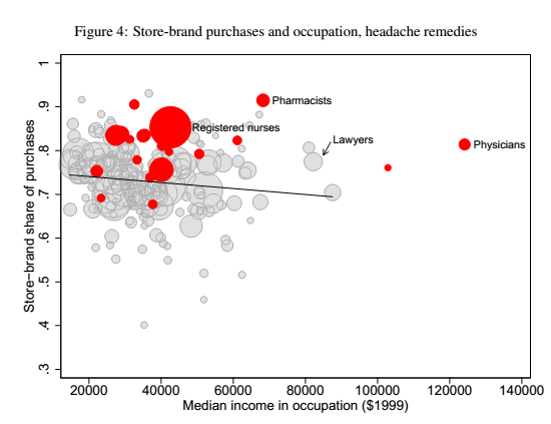
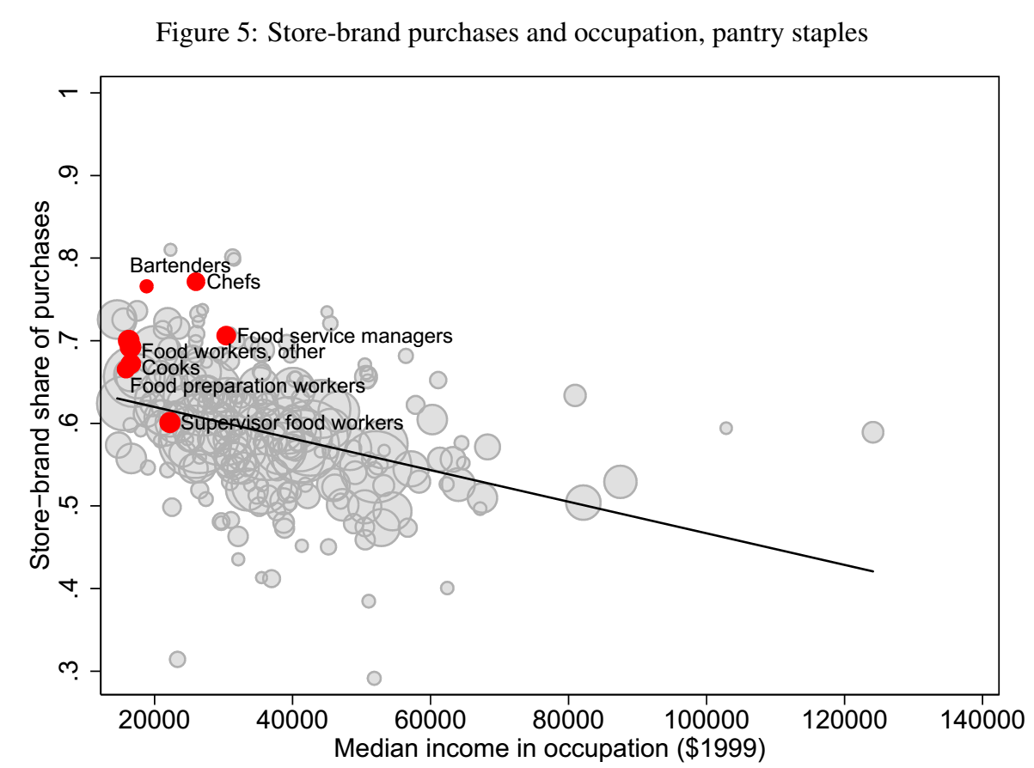
What happens when consumers gain knowledge?
- Bron. et al. (MkSc 2020): Intercepted shoppers in-store
- First, a survey, including:
- Q2: Do you prefer private label or nat’l brand? (PL=1)
- Then, a blind brand/PL taste test, followed by
- Q3: Which did you prefer? (PL=1)
- Q4: Will you buy PL next time?
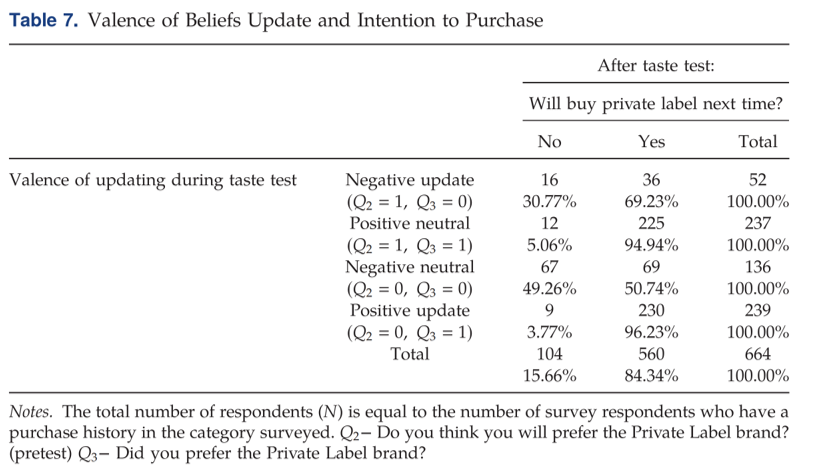
PL Share among Surveyed Shoppers
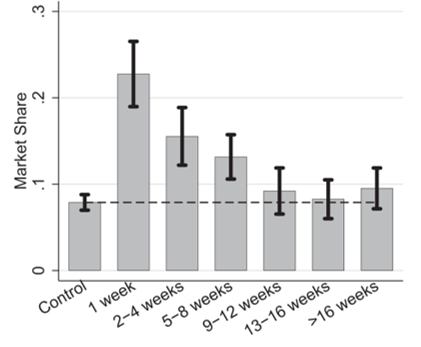
1. Credibility : Takeaways
- Less-knowledgeable consumers are more likely to pay the brand premium
- Recognized brands assumed better/safer than alternatives
- Informing consumers can change brand/PL sales
- Changes may be transitory
2. Rapid communication
Names and graphics
- facilitate understanding
- call attention to differentiating attributes
What is the value proposition?
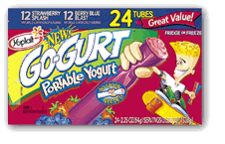
3. Personality & Self-expression

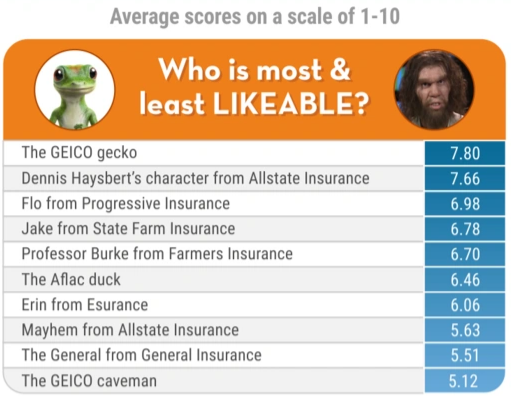

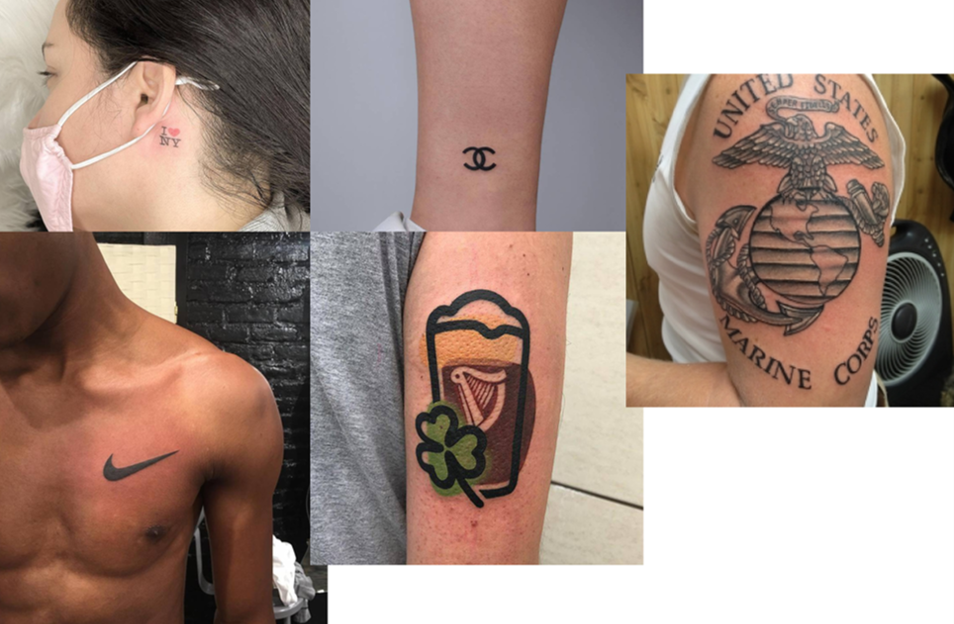
Brands can
Express shared identities: UC San Diego, San Diego Padres
Personify seller attributes, eg Jordan Brand, Kylie Cosmetics
Common brand “personalities”
- Classic/sincere, eg Hallmark, In-n-Out
- Competent, eg IBM
- Exciting/fun, eg Snapchat, Scion
- Sophisticated, eg Tiffany
- Calm/peaceful (more common in East Asia)
4. Gestalt
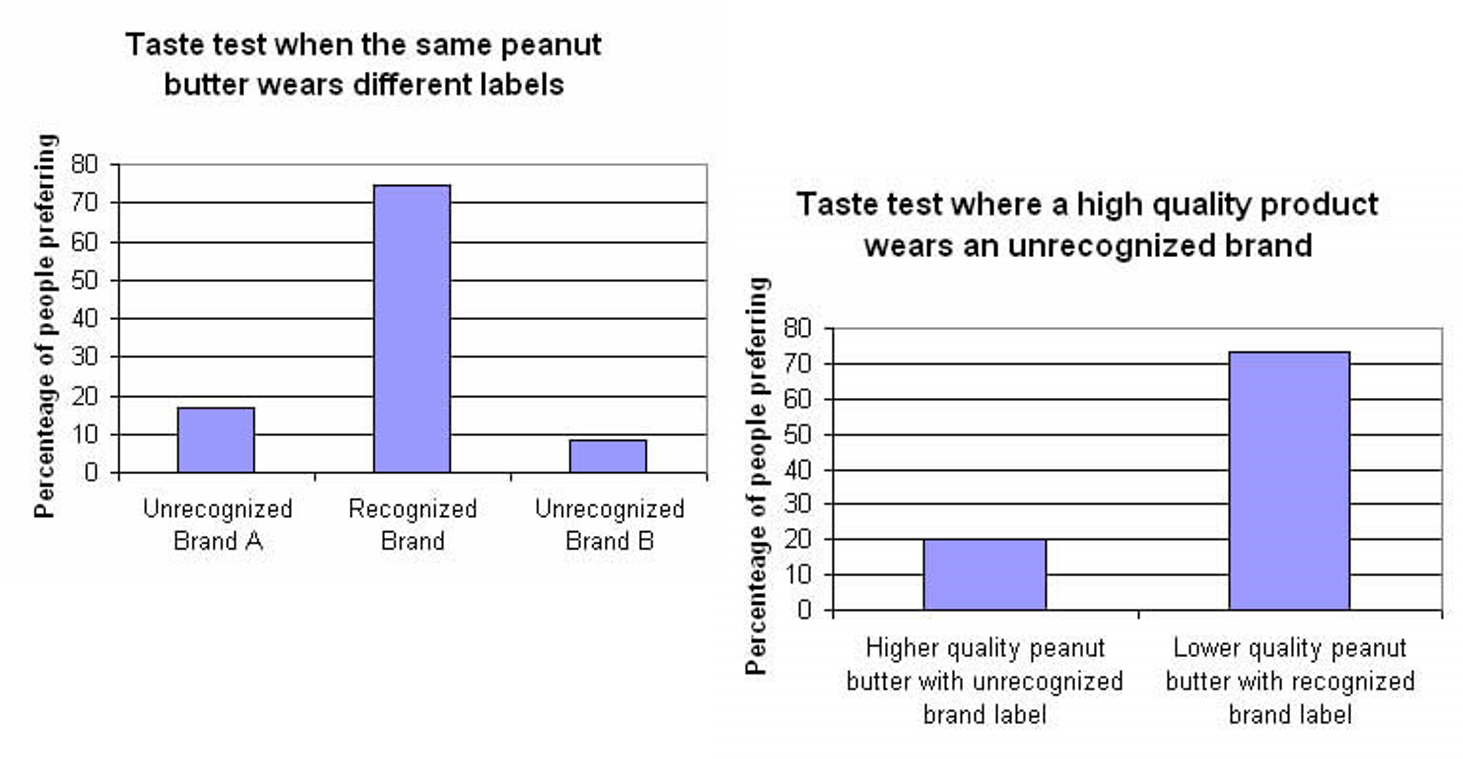
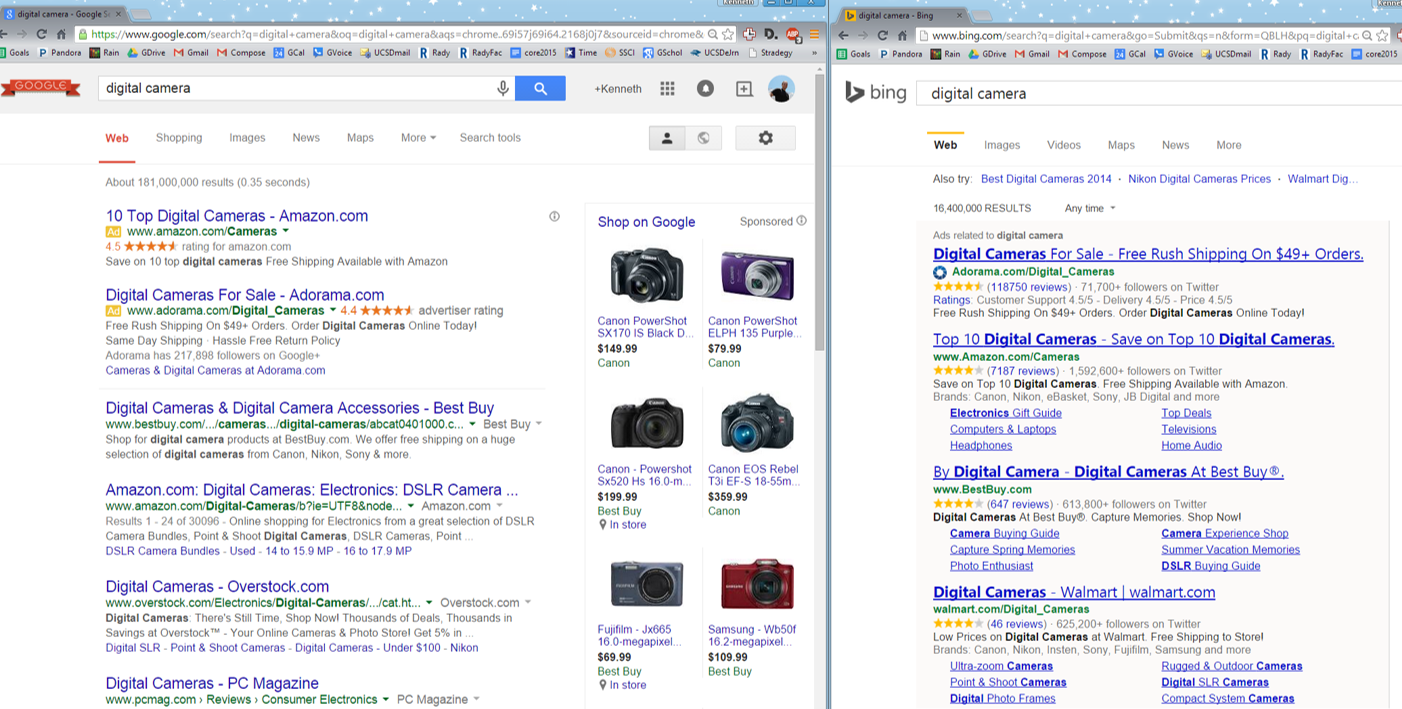
Creating artificial differentiation
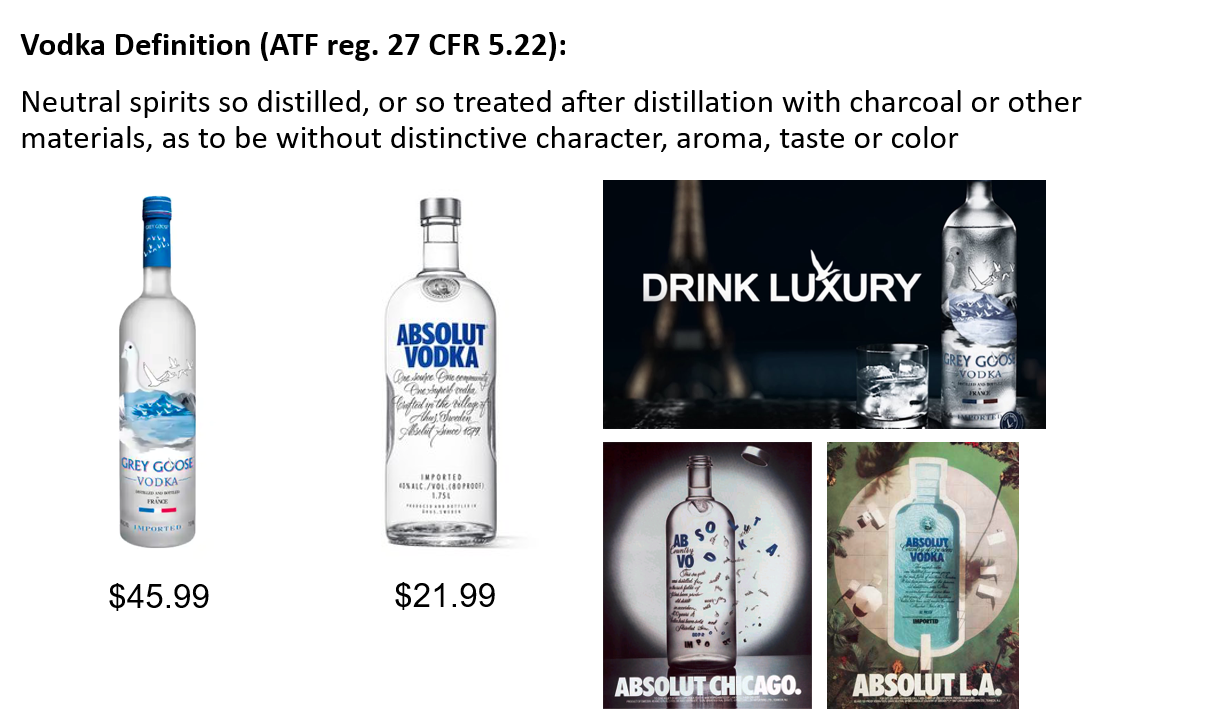
What’s in a name?

Brand Ads vs. Performance Ads ?
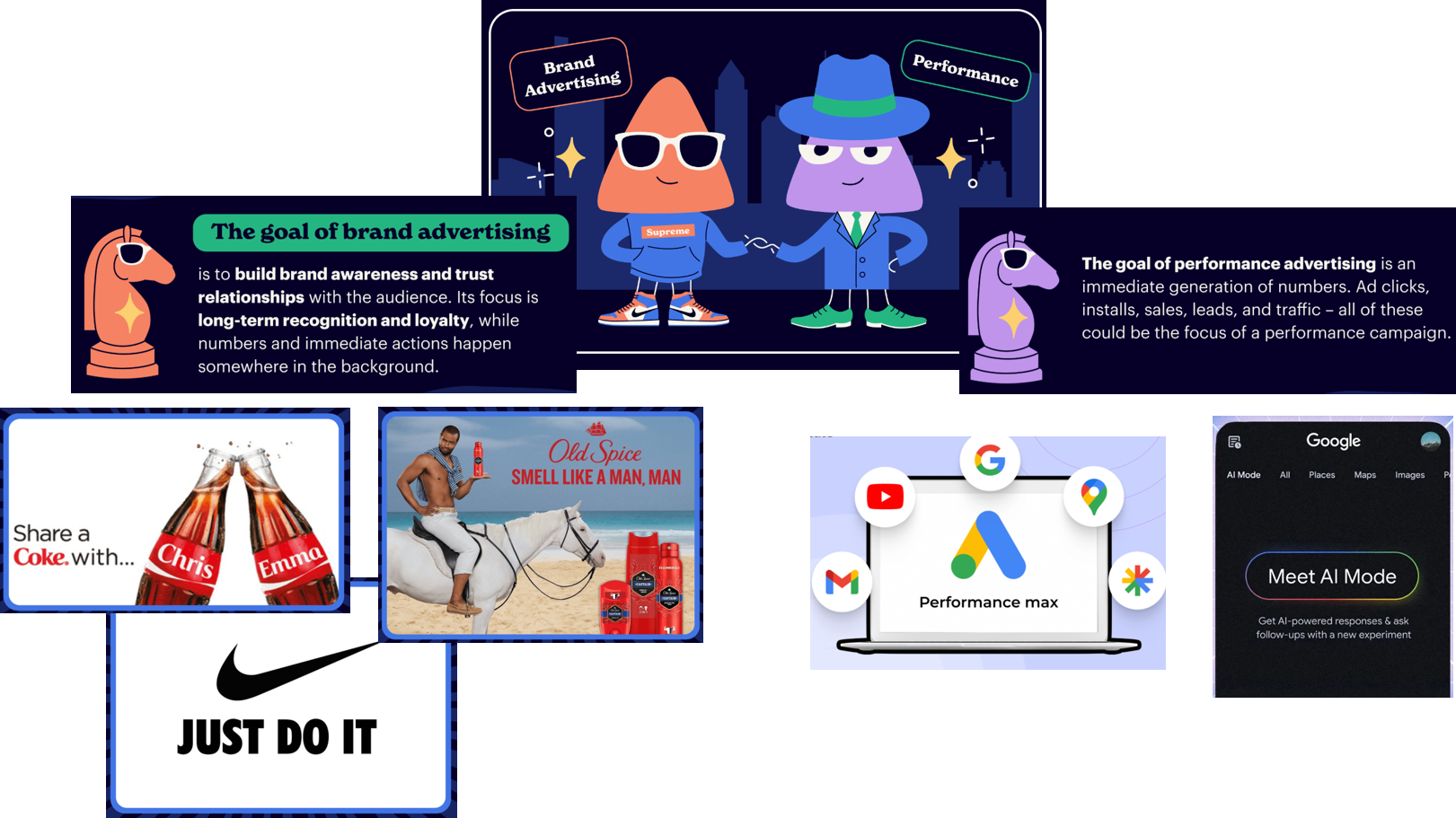
Brand is Dead?
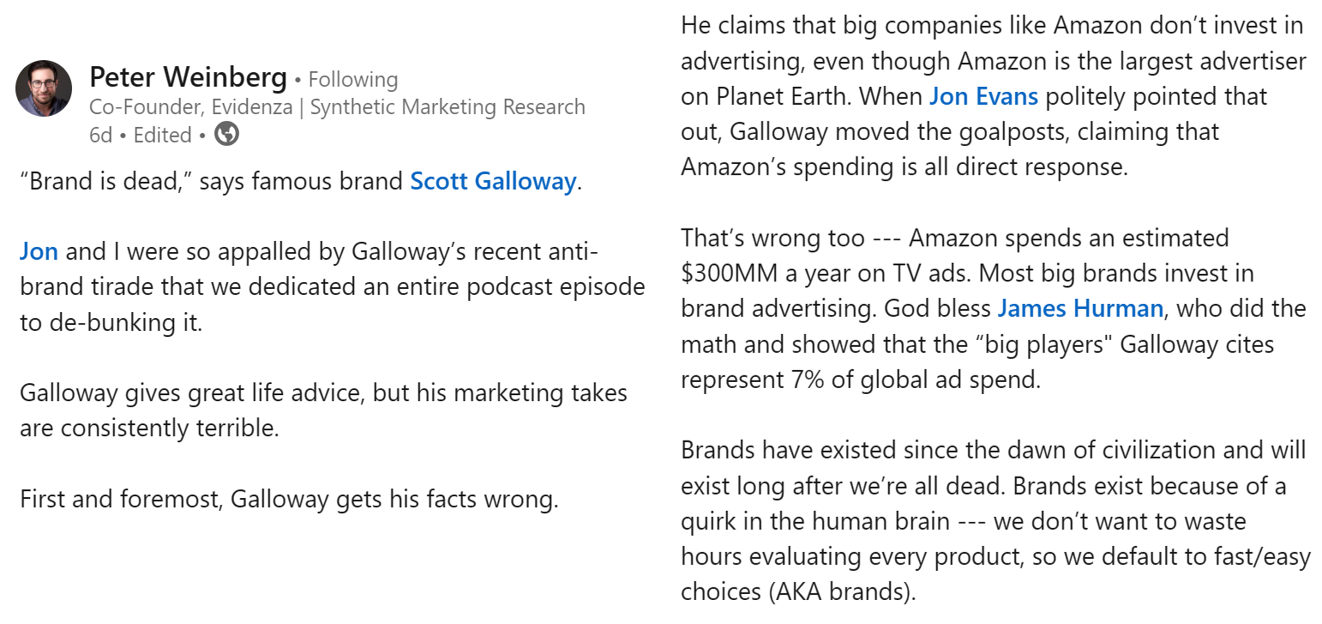

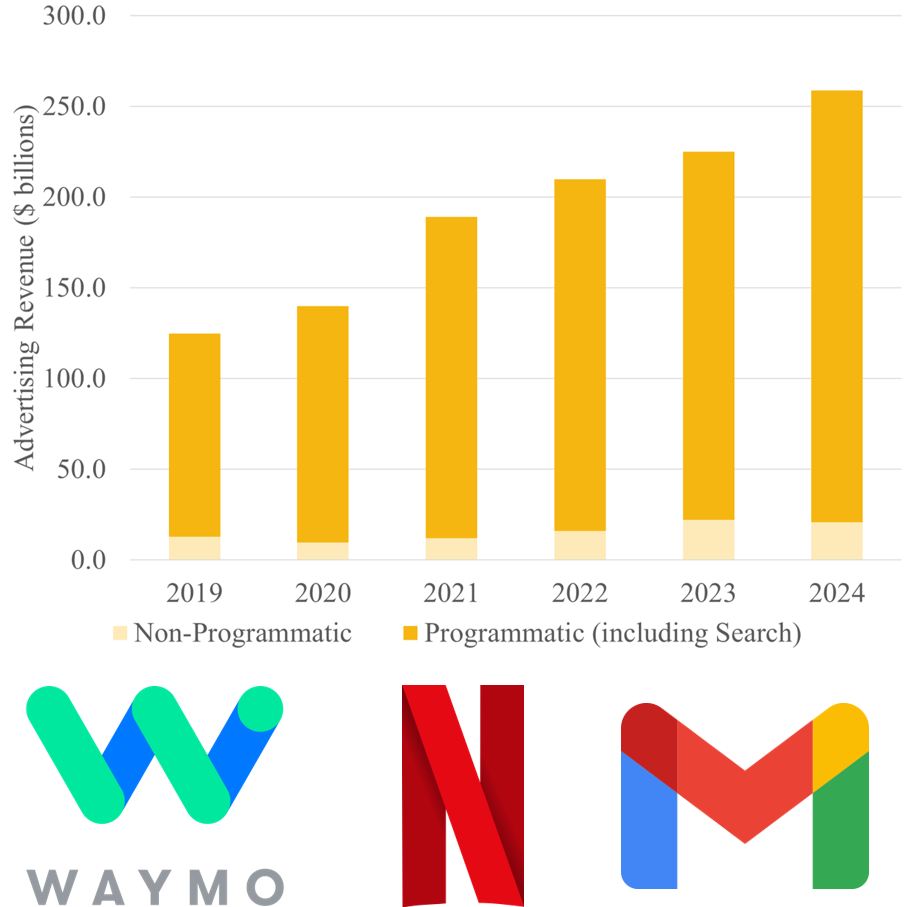
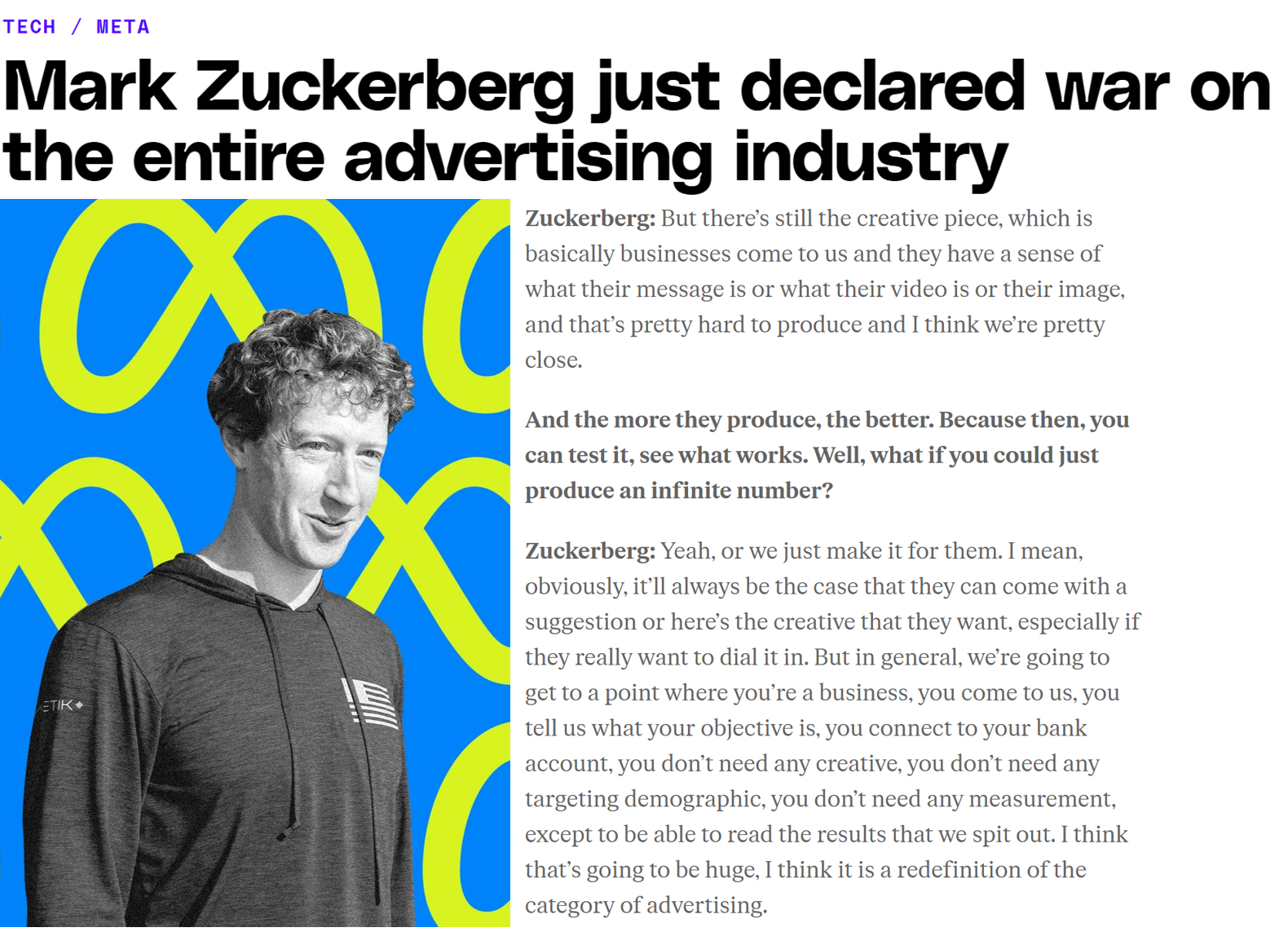
Programmatic downsides
Infrastructure maximizes correlational returns
Attribution/credit “stealing”
Many relevant outcomes: Difficult to measure
Goliath sellers, illegal monopolies, enshitification
Fraud, Algorithmic opacity, Privacy regulations
“Ad Tech Tax” : 20-50% of ad spend
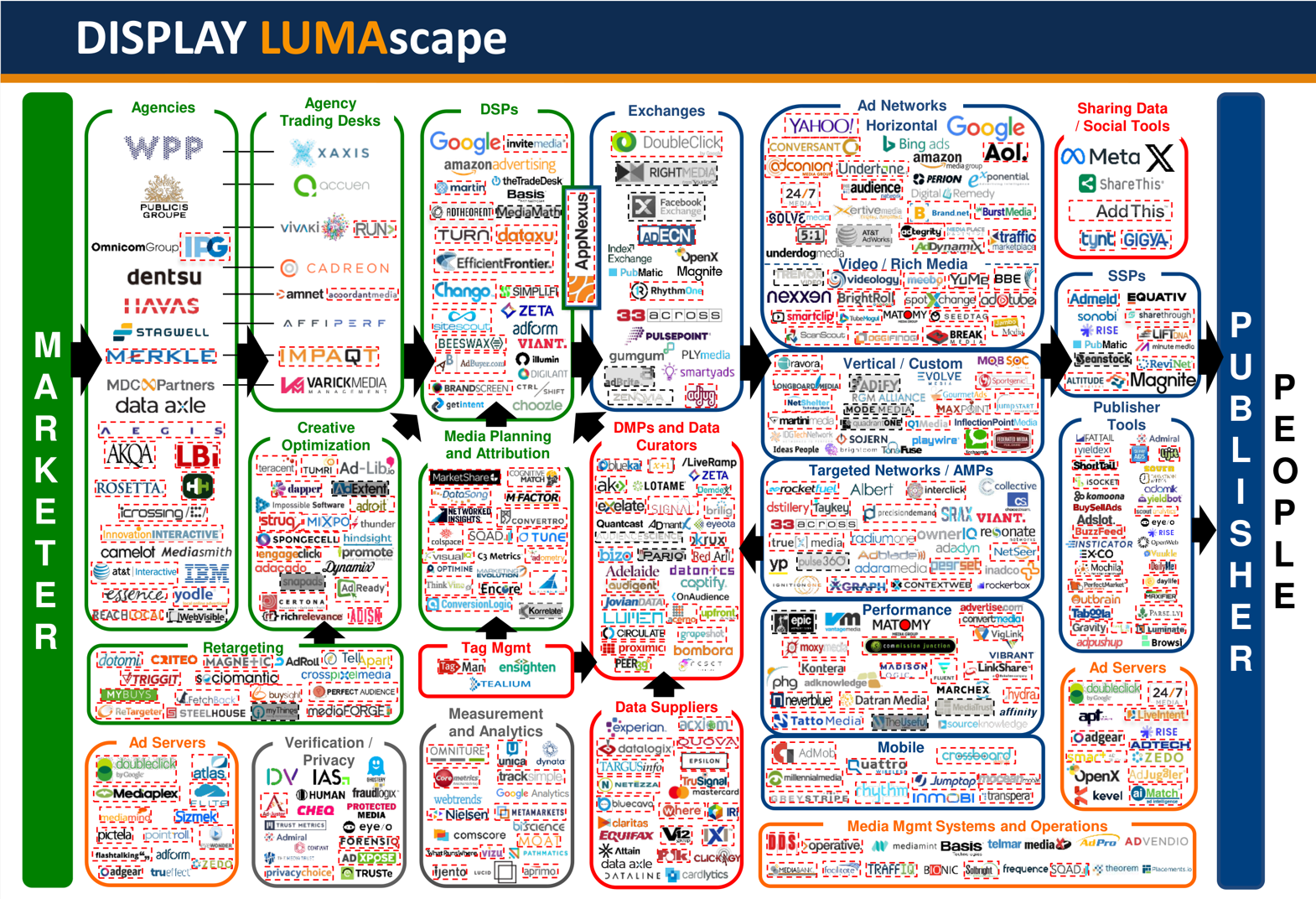
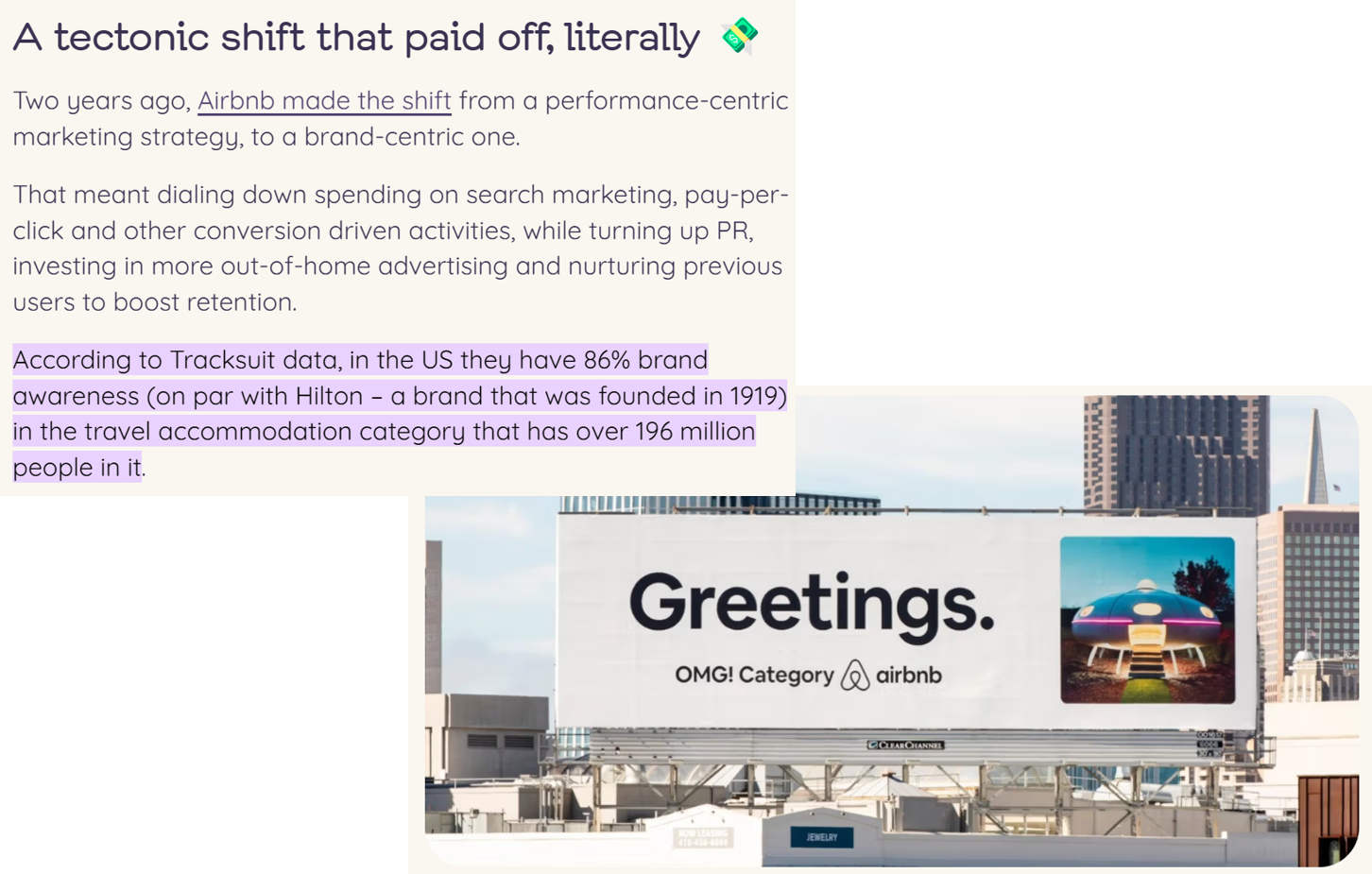
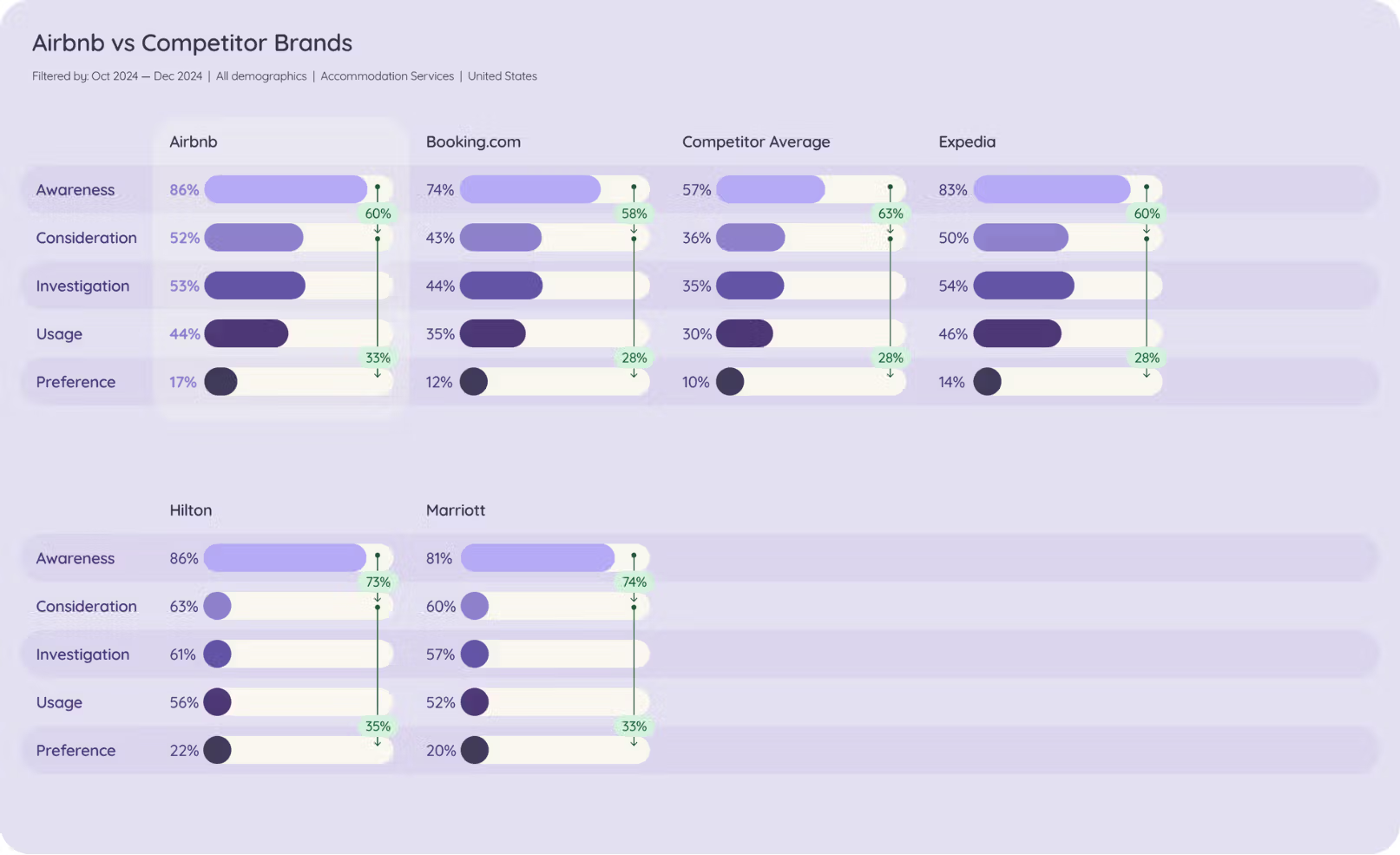
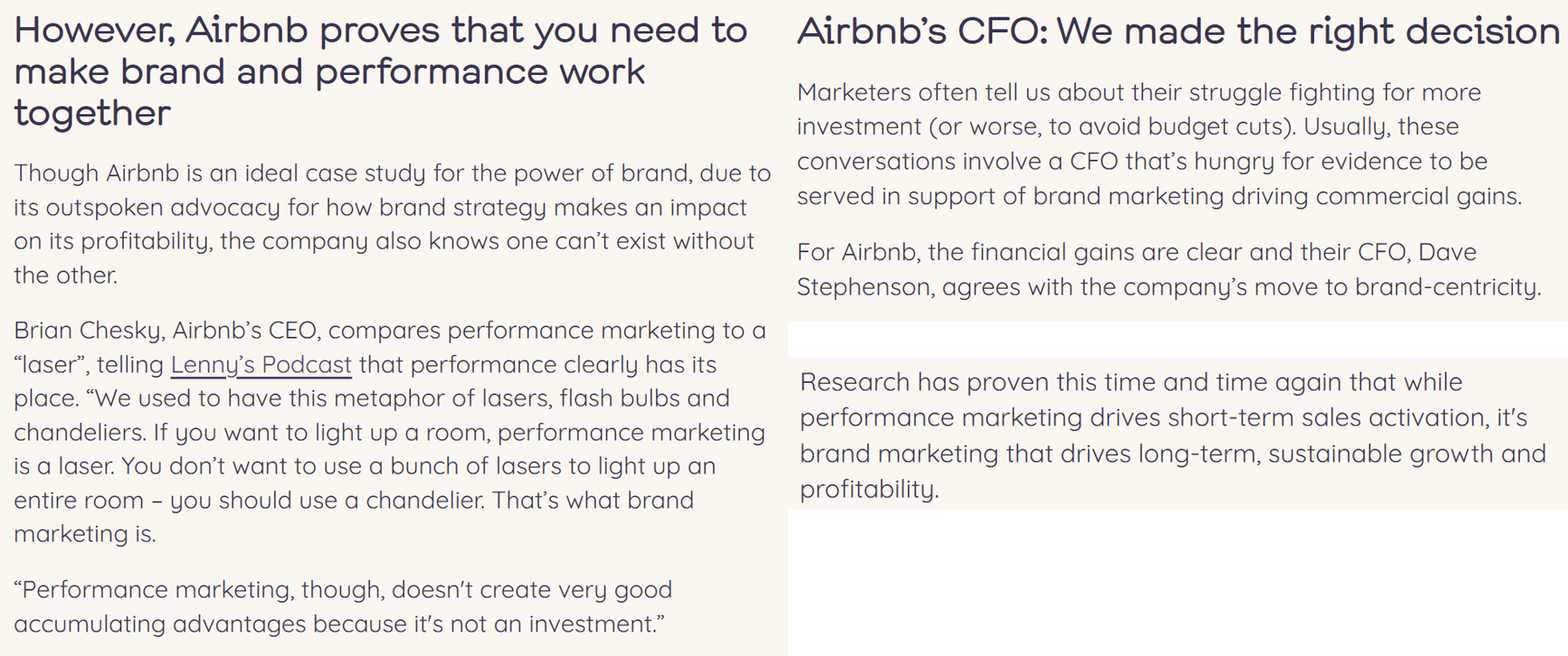
Does advertising build brands? Toyota

Does advertising build brands? Coke
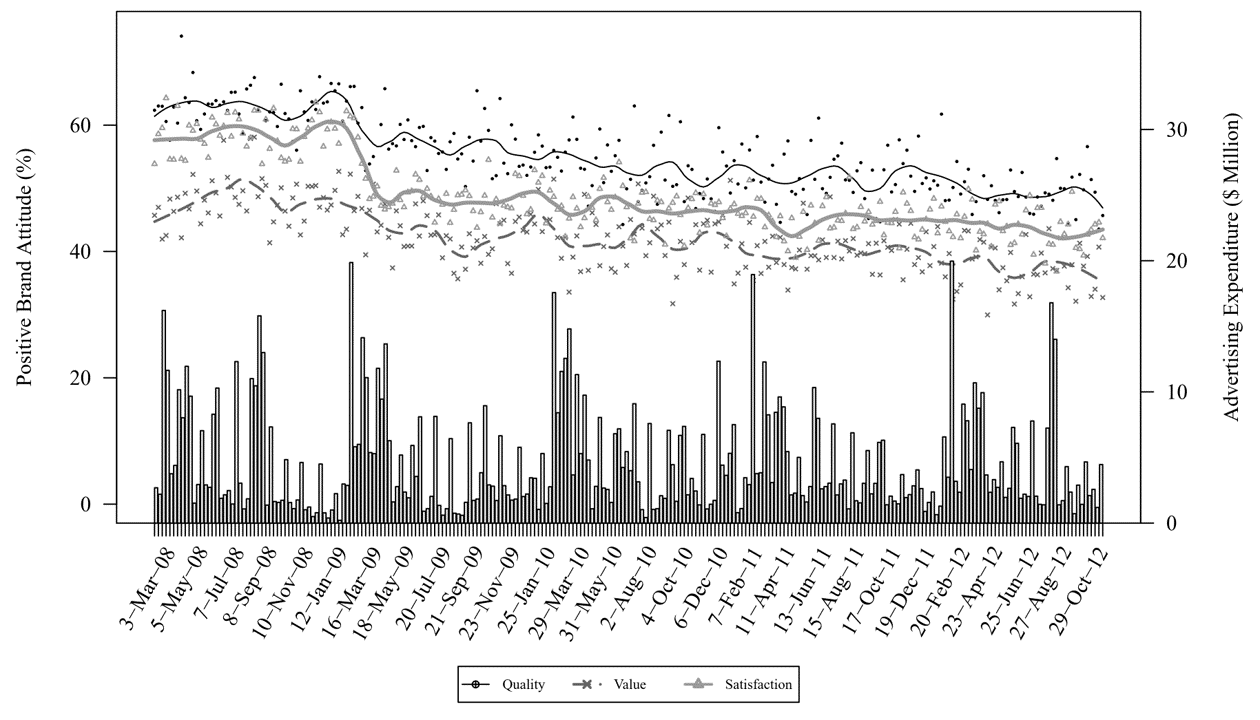
Does advertising build brands? Apple
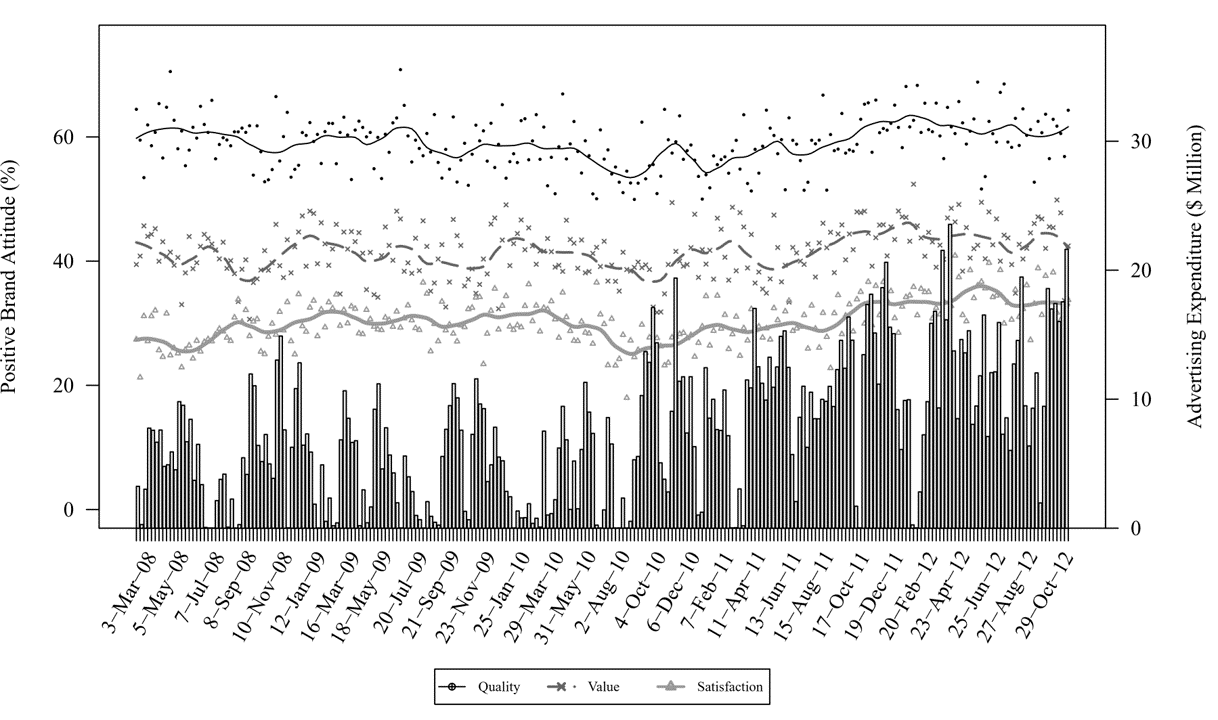
Advertising and brand attitudes
- We analyzed $264B in ad spend by 575 brands in 37 categories over 5 years
- Findings:
Own advertising increases brand perceptions
Competitor advertising decreases brand perceptions
- Advertising looks like a prisoner's dilemmaMassive data needed to estimate precise effects
Ads Measurement Approaches
Marketing Mix Models
Multi-touch Attribution
Incrementality Testing
- Marketers' word for experimental/causal lift - A/B/.../n testing, geo-lift tests, going-dark designsQuasi-experiments
- Instrumental variables, synthetic controls
Tying Things Together
Brand advertising
- Should make performance ads more effective - Long-term, high-cost, requires strategic commitment - Hard to measure incremental returns - Possible to measure correlational returnsPerformance advertising
- Highly targeted, low-cost, short-term, no attachments - Definitely possible to measure incremental returns - Pray to the algorithmic overlordsPopular theory: More brand ads in “search markets,” more performance ads in “selection markets”
- Search markets: Consumer actively searches, eg car insurance - Selection markets: Consumer chooses from a set, eg grocery store
Toolkit: Find wtp for sponsorship
We can pay a celebrity brand \(\$W\) to sponsor our phone. Conjoint estimates indicate the sponsorship will increase phone brand utility from \(\hat\beta\) to \(\hat\beta'\). Should we do it?
Let \(\pi_0=q_j(p_j-c)\) be current contribution
Let \(q'_j(p_j)=N \hat{s}'_j(p_j)\) be celebrity-sponsored demand
Calculate \(\pi_1=q'_j(p_j)(p_j-c)\)
- \(\pi_1-\pi_0\) is pure demand effect of celebrity association
Find new optimal price \(p'_j\) for demand \(q'_j(p_j)\)
Calculate \(\pi_2=q'_j(p'_j)(p'_j-c)\) ; associate with celebrity if \(\pi_2-\pi_0>W\)
Discuss: What if celebrity’s threat point is to associate with a competitor?
Discuss: What if celebrity association persists multiple years?
Discuss: What if 20% chance a celebrity scandal reduces \(\hat\beta'\) to \(\hat\beta''\lt\hat\beta\)?

Class script
Two-dimensional grid search to optimize S1 and S2 prices simultaneously
Assess profit effect of celebrity affiliation with brand, without price reoptimization
Assess profit effect of celebrity affiliation, with joint price reoptimization
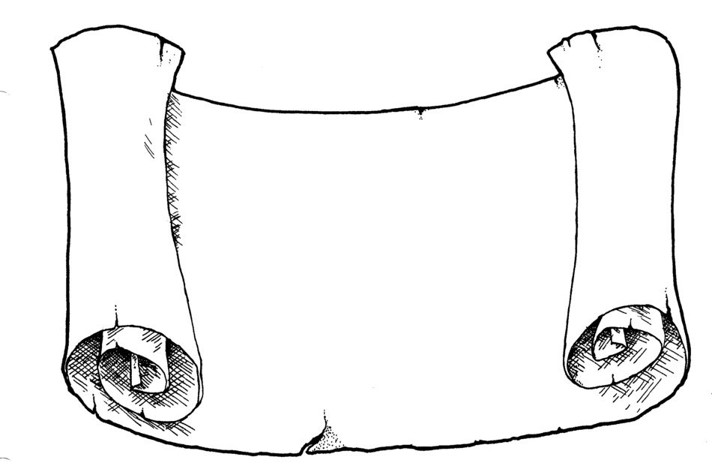
Wrapping up
Recap
- Brands are consumer associations between company assets (products, trademarks, etc) and related concepts
- Mental real estate: We can influence it but we don’t own it
- Brands work by establishing credibility, rapid communication, personality/self-expression and gestalt
- Brand/performance advertising debate trades off LR correlations vs. SR increments
- Demand models can quantify returns to brand investments
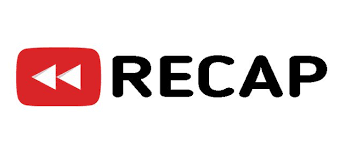
Going further
Revenue Premium as an Outcome Measure of Brand Equity (JM 2003)
Advertising and brand attitudes: Evidence from 575 brands over five years (QME 2019)
Consumer Misinformation and the Brand Premium: A Private Label Blind Taste Test (MkSc 2020)

